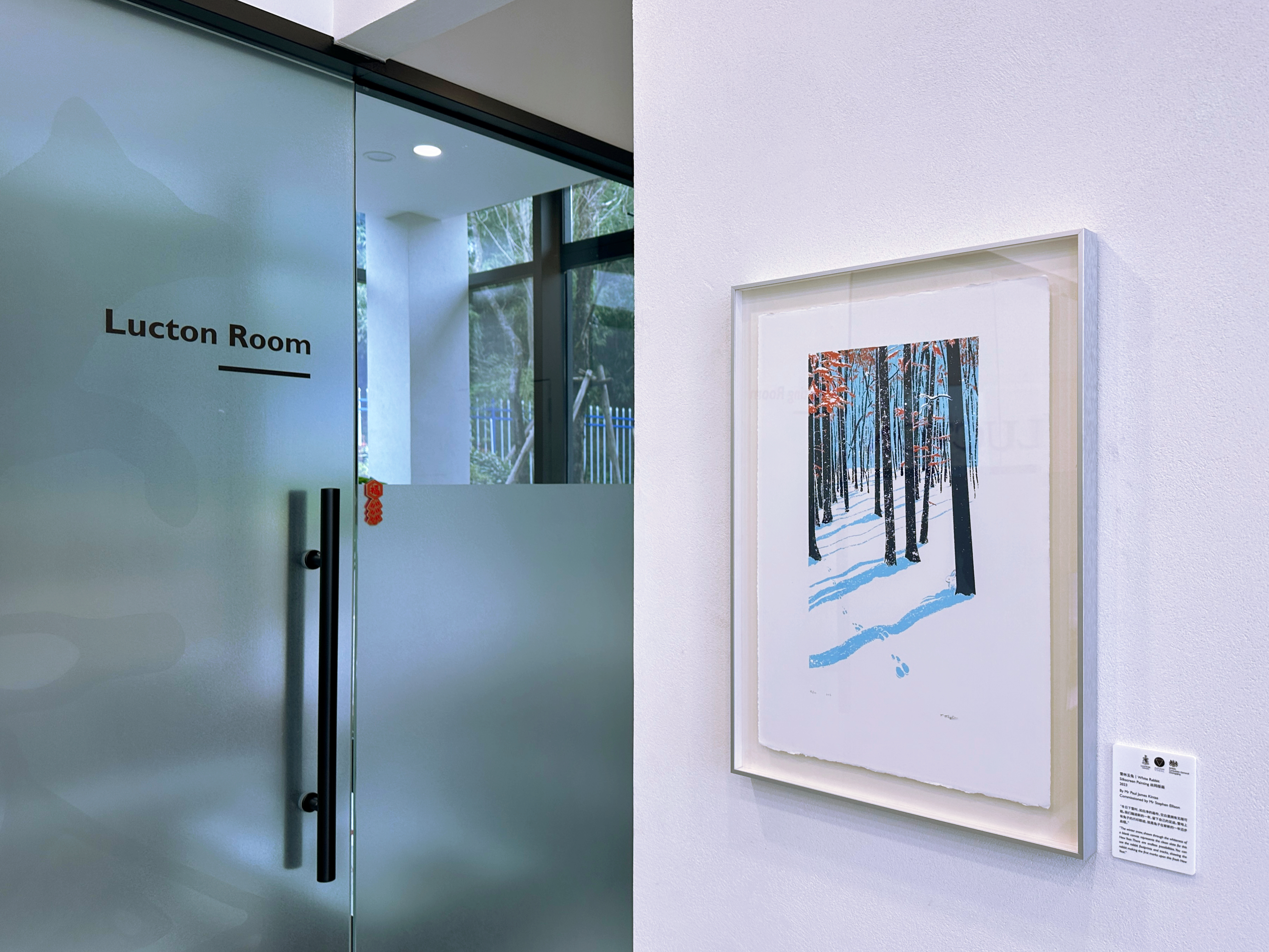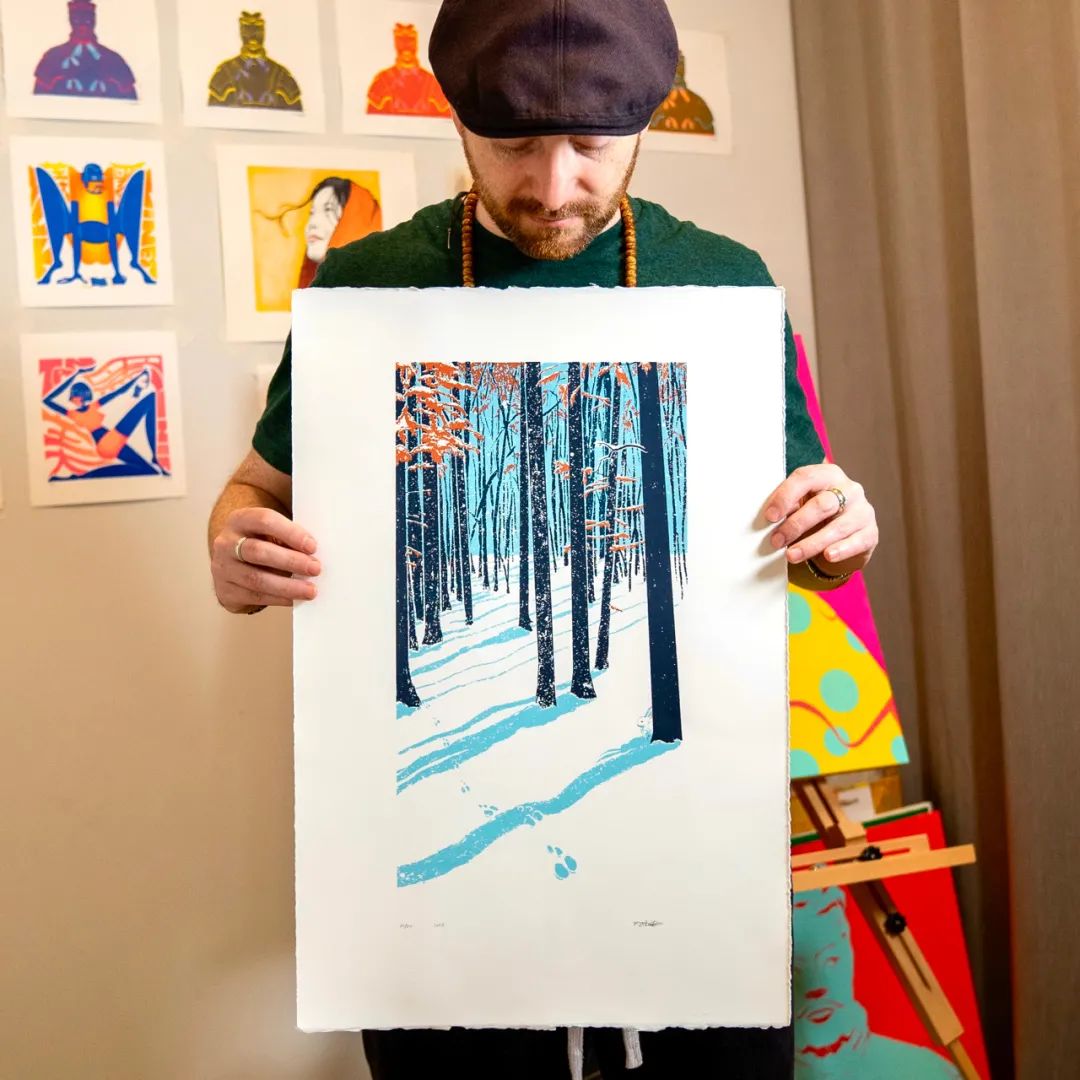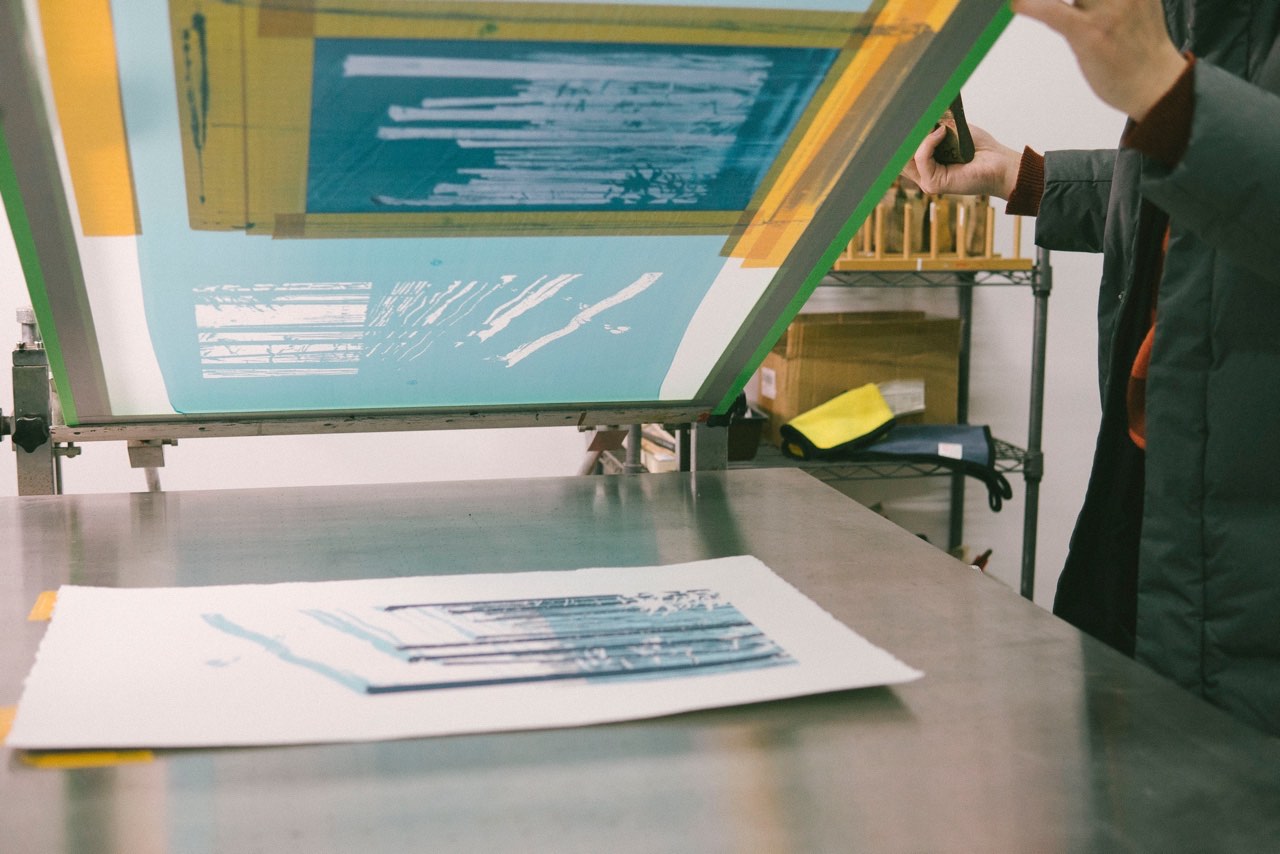On the occasion of the Chinese New Year of the Rabbit, Mr. Stephen Ellison, British Consul General Chongqing, collaborated with Mr. Paul James Kintas, a British artist living in Chongqing and the Art and Design teacher at Lucton School Chongqing. They jointly created a limited edition Chinese New Year present, White Rabbit, which is a silkscreen print. Each of the 20 prints created is unique and one will be given to our school and some will be auctioned for charity.

Mr. Stephen Ellison, who also enjoys making artistic works in his spare time, tried silkscreen print for the first time. The entire process took nearly seven hours, including stencil making, paper cutting, colour mixing, matching, printing and drying. Mr. Paul James Kintas, from Manchester, UK, is not only an Art and Design teacher at Lucton School Chongqing, but also an artist and illustrator who has published several illustrations and whose works have been exhibited in many art galleries in Europe.
Meaning of the Work
“2023 has arrived! With this being the year of the Rabbit, for this Chinese New Year I have been commissioned to create an illustration that captured the essence of the rabbit and a fresh, new beginning to this year. I wanted to express the joyous energy of the rabbit, by showing its tiny footprints making the first marks upon a snow-covered landscape. The snow, shown through the whiteness of a blank canvas, representing the clean slate for this new year, and the rabbit leaving its print upon it.”
By Mr. Paul James Kintas

Along with the in-depth creation inspiration, the artwork also carries a beautiful implicit meaning. An interview with Mr. Paul James Kintas about the whole creation process and the deeper field of art and design was carried out.
• The final work of the print is very delicate and teemed with details. The colour choice seems very well-considered as well. Can you share with us the process of how the silkscreen print is made in the workshop?
Thank you, yes, with colour I normally create a digital version of the design, so that I can test out different combinations and see what works best before printing. These two colours, blue and orange are complimentary colours, combined, they ′pop′ when next to each other.
My process starts with a mind map, going over ideas related to the theme, which this year was rabbits and a forest. I then sketch out ideas, pick my favourite and develop it into layers to be used for the silkscreen.
The silkscreen printing process involves a light-reactive emulsion, a negative print of my design and UV light to harden the emulsion to the silkscreen in areas that I want to keep on the screen. Each silkscreen layer becomes a stencil, with only the areas where I want paint to be pushed through, transparent. We line up the layers so that each layer can combine to create a final image. There is some beauty in an imperfect print, that is part of the charm of a silkscreen print, it still retains that hand-made quality.
• Making the screen plate seems to be one the most important steps in silkscreen print. How many times do usually make modifications on the screen plate before you settle on the final?
Usually I would make modifications before the stencil is made, I may drastically change an aspect of the design based on feedback from designers, but a design usually would be modified for one or two days. When printing, if we find the stencil is imperfect, I may edit the original design again and re-do the silkscreen stencil. It all depends on the complexity of the design. With this being a more simple design, there was less chance of a mistake and no changes were needed once we made the stencils.

• Artwork creation, aiming at constant “perfection”, might require effort, creativity as well as patience. It can be a fulfilled long journey (maybe lonely but enjoyable). Interests for art and design might emerge when one is little but they can also be inspired in countless possible moment in one′s life. For whoever is pursuing a path towards art and design, can you share with them some insights of yours?
For those who want to get into art, design or have a passion for creating, I would recommend practice, practice, practice. I know it sounds cliché, but drawing in a portable sketchbook when you are relaxing, or bored, can really help you level-up your observation skills and hand-eye coordination. There are no shortcuts to drawing, unfortunately. I would also suggest an open mind when trying art, be open to experimenting with new materials, expand your art skill set, don′t close yourself off from something new. Follow these tips and you will see yourself improve in just a short amount of time.
Credit:
英国驻重庆总领事馆
Autumn clf
Pop Tiger Print & Design Studio

